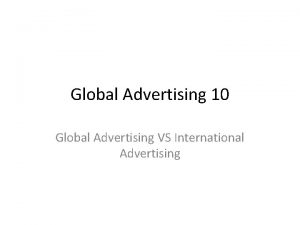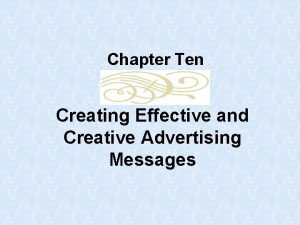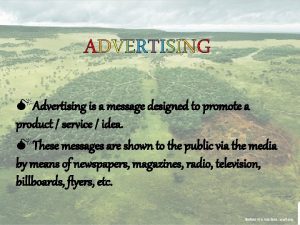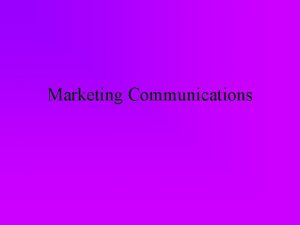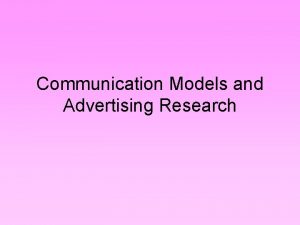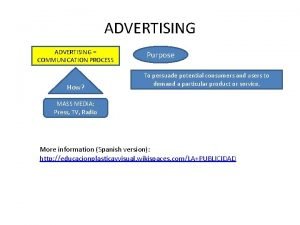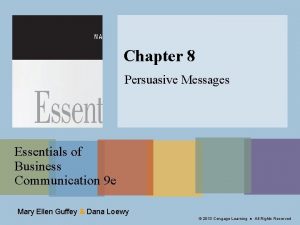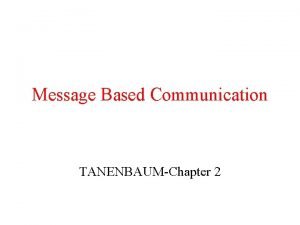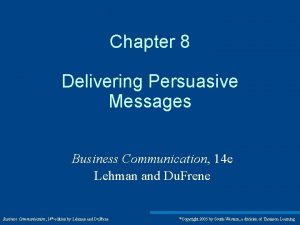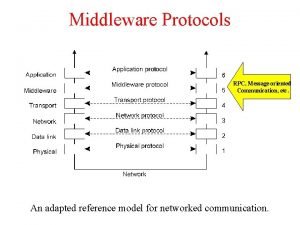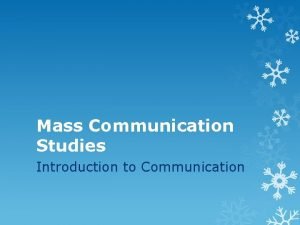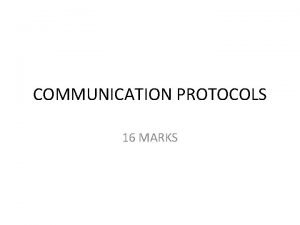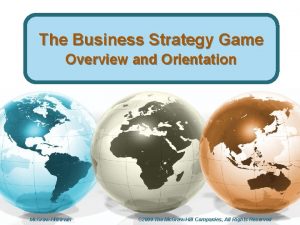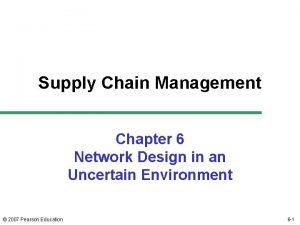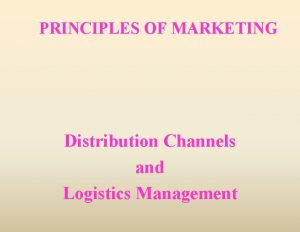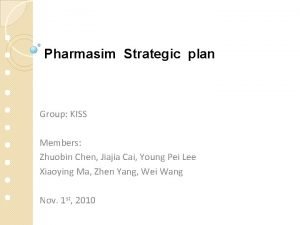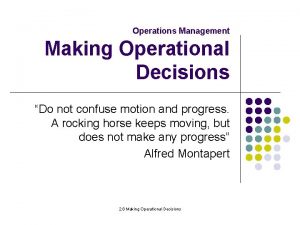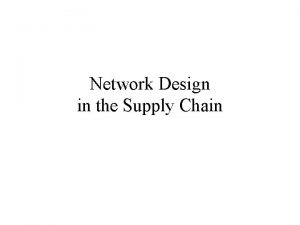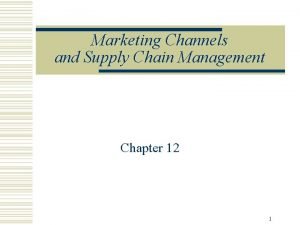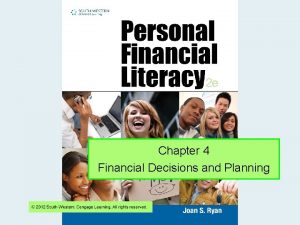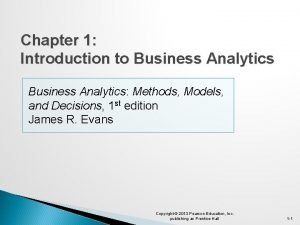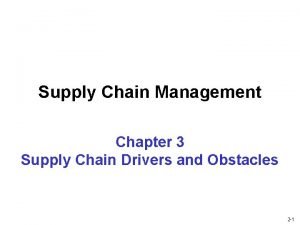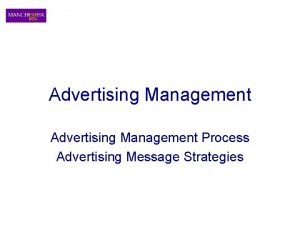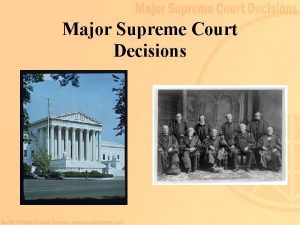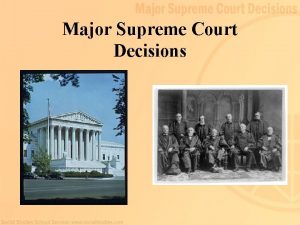Message Decisions Major Decisions in Advertising Communication l

































































- Slides: 65

Message Decisions

Major Decisions in Advertising

Communication l l Advertising is, first of all, a form of communication. Communication l l l The passing of information The exchange of ideas The process of establishing a commonness or oneness of thought between a sender and a receiver.

Communication Process

Elements in the Communication Process l l Sender/Source: the person or organization that has information to share with another person or group of people. Receiver/Audience: the person(s) with whom the sender shares thoughts or information. Message: the information or meaning the source hopes to convey. Channel: the method by which the communication travels from the source or sender to the receiver. l Personal: salespeople, word-of-mouth. l Nonpersonal (mass media): broadcast, print.

Elements in the Communication Process l l Encoding: the process that the source puts thoughts, ideas, or information into a symbolic form (words, symbols, pictures, or video). Decoding: the process that the receiver transforms the sender’s message back into thought.



Symbol

Picture

Picture

Picture

Video l l Dentyne – Frost Bites, Ice Seat belt – 1, 2 BRIDGESTONE: Designed to save life. Wendy's: Where Is The Beef

Gaps between Encoding and Decoding

Elements in the Communication Process l l l Noise: unplanned distortion or interference. Response: the receiver’s set of reactions after seeing, hearing, or reading the message. Feedback: the part of the receiver’s response that is communicated back to the sender.

Cognitive Processing of Communications l l The Cognitive Response Approach The Elaboration Likelihood Model (ELM)

The Cognitive Response Approach Exposure to advertisement Cognitive Responses Attitudes Product/message thoughts Brand attitudes Source-oriented thoughts Ad execution thoughts Purchase intention Attitude towards the advertisement

Cognitive Response Categories l Product/Message Thoughts l l l Source-Oriented Thoughts l l l Counter arguments Support arguments Source derogation Source bolstering Ad-Execution Thoughts l l l Thoughts about the ad itself Affect attitude toward the ad Important determinant of advertising effectiveness

The Elaboration Likelihood Model (Petty, Cacioppo, and Schumann, 1983) l l Focuses on the way consumers respond to persuasive messages based on the amount and nature of elaboration or processing of information Routes to attitude change

Routes to attitude change l l Central route to persuasion: ability and motivation to process a message is high and close attention is paid to message content. Peripheral route to persuasion: ability and motivation to process a message is low and receiver focuses more on peripheral cues rather than message content.

Ads Following Central Route

An Ad Following Peripheral Route

Think l Does a spokesman always represent a peripheral cue?

Communication Process

Message Decisions l l Message content (what to say) Message structure (how to say it logically) Message format (how to say it symbolically) Message source (who should say it)

Message Content l l Appeal, theme, idea, or unique selling proposition (USP) Rational or emotional appeals l Rational l Positive, e. g. SUZUKI, PHILIP寬螢幕, Rejoice. Negative, e. g. Dia香皂, Cinturon皮帶, careerbuilder. com. Emotional, e. g. 可口可樂, 中華汽車, PSP – 1, 2, 3.


Do Humorous Ads Wear Out Too Fast? l l Two opposing opinions Solution: humorous campaigns consisting of many different commercials. l l l KFC – 會客篇, 監獄篇 AMERIQUEST – 廚房篇, 飛機篇 BRAHMA Beer – 1, 2

Fear Appeals and Message Acceptance Rejection Acceptan ce Facilitating effects Resultant nonmonotonic curve Level of fear Inhibiting effects

Message Structure l l l Order of Presentation Conclusion Drawing Message Sidedness Refutation Verbal versus Visual Messages

Order of Presentation l l Primacy effect: information presented first is most effective. Recency effect: the last arguments presented are most persuasive. Most effective sales presentations open and close with strong selling points and bury weaker arguments in the middle. Target audience’s attitude: opposed, not interested, or predisposed.

Recall Message Recall and Presentation Order Beginning Middle End

Conclusion Drawing l l l In general, messages with explicit conclusions are more easily understood and effective in influencing. Open-ended ads were more effective than closed-ended arguments that did include a specific conclusion – but only for involved audiences. Factors: involvement, education, the type of issue or topic, the nature of the situation, complexity.

Conclusion Drawing

Message Sidedness l l l One-sided message: mention only positive attributes or benefits. Two-sided message: present both good and bad points. Two-sided message may enhance the credibility of the source. E. g. Avis: “We are No. 2. We try harder. ”; Listerine: “ 你一天必須痛恨這種氣味兩次!”; 全聯福利中心. Factors: education, audience’s attitude.

Two-Sided Message

Refutation l l The communicator presents both sides of an issue and then refutes the opposing viewpoint. Refutational messages may be useful when marketers wish to build attitudes that resist change and must defend against attacks or criticism of their products or company. Refutational appeals are more effective than onesided messages in making consumers resistant to an opposing message. Examples: PHS vs. GSM, 烤米片 vs. 洋芋片.

Refutation

Verbal versus Visual Message l l Many ads provide minimal amounts of information and rely on visual elements to communicate. Visual images are often designed to support verbal appeals.

Verbal versus Visual Message l l l When verbal information was low in imagery value, the use of pictures providing examples increased both immediate and delayed recall of product attributes. However, when the verbal information was already high in imagery value, the addition of pictures did not increase recall. The use of a visual that is inconsistent with the verbal content leads to more recall and greater processing of the information presented.






Message Format l l l Print ad: headline, copy, illustration, and color. Radio ad: words, voice qualities, and vocalizations. TV ad: body language.

Message Source Attribute Process Credibility Internalization Attractiveness Identification Power Compliance

Source Credibility l l l Credibility is the extent to which the recipient sees the source as having relevant knowledge, skill, or experience and trusts the source to give unbiased, objective information. Internalization: the receiver adopts the opinion of the credible communicator since he or she believes information from this source is accurate. Two dimensions: expertise and trustworthiness.

Source Credibility l Applying expertise l l Oral-B: 全球最多牙醫選用的品牌。 Extra無糖口香糖:世界牙醫聯盟認可。 Applying trustworthiness Using corporate leaders as spokespeople l l KYMCO、達美樂、LG、Chrysler (Lee Iacocca) Pros & Cons

AGV uses the anchorperson as an advertising spokesperson

Dell Computer uses its founder and CEO as an advertising spokesperson

Limitations of Credible Sources l High-Credibility → Asset and Low-Credibility → Liability ? l l l A very credible source is more effective when message recipients are not in favor of the position advocated in the message. A very credible source is less important when the audience has a neutral position, and such a source may even be less effective than a moderately credible source when the receiver’s initial attitude is favorable. Sleeper effect: the persuasiveness of a message increases with the passage of time. l However, many studies have failed to demonstrate the presence of a sleeper effect.

Source Attractiveness l l l Attractiveness encompasses similarity, familiarity, and likability. Identification: the receiver is motivated to seek some type of relationship with the source and thus adopts similar beliefs, attitudes, preferences, or behavior. Two dimensions: similarity and likability.

Applying Similarity l l Similarity: resemblance between the source and the receiver of the message. Similar people or situations l l 多芬 飛柔 保力達B 台新銀行現金卡

Likability l l An affection for the source as a result of physical appearance, behavior, or other personal traits. Applying likability l l Using celebrities Decorative models

Using Celebrities l l l Nearly 20% of all TV commercials feature celebrities. E. g. Tiger Woods, 周星馳, 鄔瑪舒曼. 使用名人的廣告在評比上要比非名人版本高出 13%。 在廣告中使用名人不僅能提升注意與認同,而且明星 通常能在收視群中保有高度影響力。 Stopping power: draw attention to advertising messages in a very cluttered media environment. Balance Theory (Fritz Heider)


Yao Ming is a Popular Endorser in China

Choosing a Celebrity Endorser Match w/audience Trust Match w/product Risk Factors Image Familiarity Cost Likability

Endorser Traits

Using Celebrities l l l Overshadowing the product Overexposure, e. g. 吳念真. Target audiences’ receptivity l l l Knowledge, attitude Endorsed by no one: New Balance. Risk to the advertiser l l l Pepsi – Michael Jackson, Brittany Spears. Nike – Tiger Woods. 超過74%的受訪者不喜歡在廣告中看到運動明星, 他們認為這類運動明星個個都是以自我為中心,並 且恃寵而驕。

Decorative Models l l l Physically attractive communicators generally have a positive impact and generate more favorable evaluations of both ads and products than less attractive models. Gender appropriateness and relevance to the product An attractive model facilitates recognition of the ad but does not enhance copy readership or message recall.

Source Power l l l A source has power when he or she can actually administer rewards and punishments to the receivers. The power of the source depends on three factors: perceived control, perceived concern, and perceived scrutiny. Compliance: the receiver accepts the persuasive influence of the source and acquiesces to his or her position in hopes of obtaining a favorable reaction or avoiding punishment.

Source Power l l l Power as a source characteristic is very difficult to apply in a nonpersonal influence situation such as advertising. An indirect way of using power is by using an individual with an authoritative personality as a spokesperson. The use of source power applies more in situations involving personal communication and influence.

Source Power
 Image making meaning
Image making meaning Decision media
Decision media Major decisions in advertising
Major decisions in advertising Major decisions in advertising
Major decisions in advertising Major decisions in advertising
Major decisions in advertising Screening decisions and preference decisions
Screening decisions and preference decisions Global advertising and international advertising
Global advertising and international advertising Message decisions
Message decisions Generic creative style advertising
Generic creative style advertising Message execution styles in advertising
Message execution styles in advertising Advertising is a message designed to promote
Advertising is a message designed to promote Message design in advertising
Message design in advertising Features of democracy
Features of democracy What is a paid form of communication
What is a paid form of communication Advertising communication definition
Advertising communication definition Marketing communication process
Marketing communication process Awareness interest desire action
Awareness interest desire action Advertising communication process
Advertising communication process Rational appeals focus on making or saving money
Rational appeals focus on making or saving money Positive business messages
Positive business messages Composing the message in business communication
Composing the message in business communication Bad messages
Bad messages Message-oriented communication
Message-oriented communication Persuasive message in business communication
Persuasive message in business communication Persuasive message
Persuasive message Receipt-based transient synchronous communication
Receipt-based transient synchronous communication Communication game pass the message
Communication game pass the message Parallel bus vs serial bus
Parallel bus vs serial bus What is oral communication and written communication
What is oral communication and written communication Serial communication and parallel communication
Serial communication and parallel communication Examples of mass communication
Examples of mass communication Oral communication conclusion
Oral communication conclusion Serial communication vs parallel communication
Serial communication vs parallel communication International product decisions
International product decisions Bsg online tips
Bsg online tips Decision tree in supply chain management
Decision tree in supply chain management Product consistency example
Product consistency example Technical decisions in project charter
Technical decisions in project charter Product line decisions
Product line decisions Market logistics decisions for distribution channels
Market logistics decisions for distribution channels People with political savvy make decisions that:
People with political savvy make decisions that: Pharmasim
Pharmasim Channel captain marketing
Channel captain marketing Part 6: you make the decision - distribution decisions
Part 6: you make the decision - distribution decisions Average revenue
Average revenue Operational decisions: bump up your bumper
Operational decisions: bump up your bumper Framework for network design decisions
Framework for network design decisions Setting channel objectives
Setting channel objectives Factors influencing pricing
Factors influencing pricing Components of facilities decisions
Components of facilities decisions Evaluating selection techniques and decisions
Evaluating selection techniques and decisions Channel design marketing
Channel design marketing Describe the process specification structured decisions.
Describe the process specification structured decisions. Basic warehousing decisions
Basic warehousing decisions Pricing and output decisions in perfect competition
Pricing and output decisions in perfect competition An organized method for making good buying decisions.
An organized method for making good buying decisions. Chapter 7 buying decisions
Chapter 7 buying decisions Chapter 4 financial decisions and planning
Chapter 4 financial decisions and planning Chapter 4 financial decisions and planning
Chapter 4 financial decisions and planning What is layout decision
What is layout decision Branding and packaging decisions
Branding and packaging decisions Location
Location Business analytics methods models and decisions
Business analytics methods models and decisions Channel design decisions example
Channel design decisions example Seemingly irrelevant decisions in recovery
Seemingly irrelevant decisions in recovery Components of facilities decisions
Components of facilities decisions






